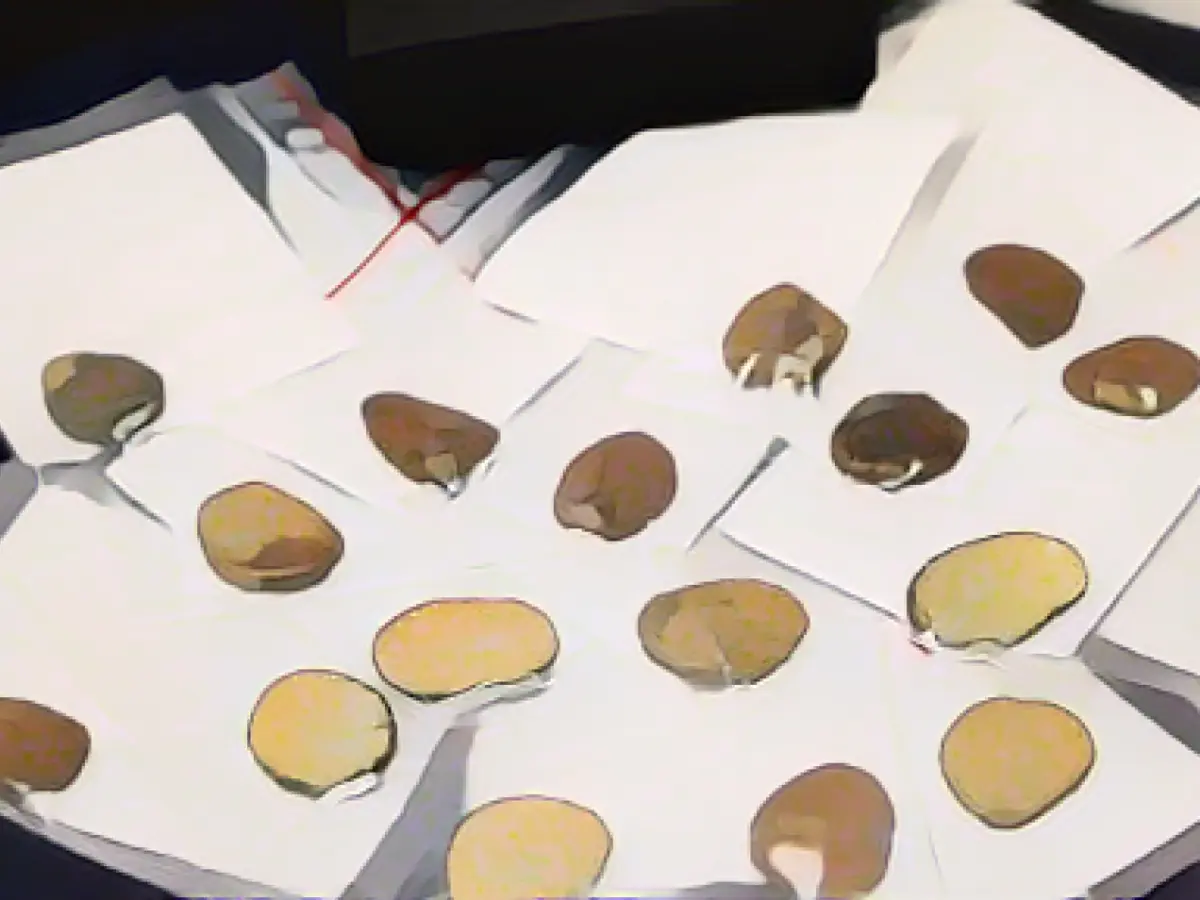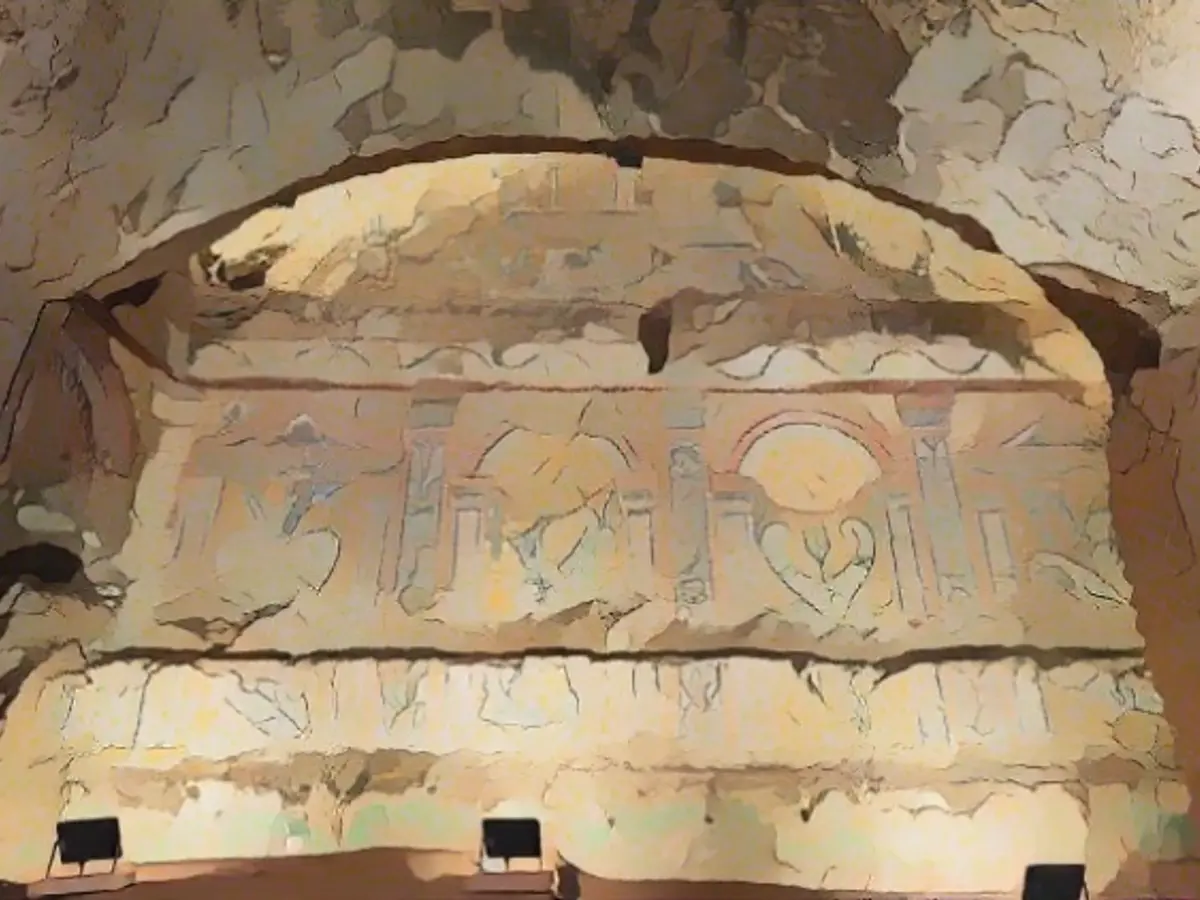Exploring the Cosmic Connection in Halle: Nebra Sky Disk Returns Home
Matthias Maurer, a German astronaut, recently brought a piece of history back to Earth—quite literally. After spending five months aboard the International Space Station (ISS), Maurer returned the replica of the Nebra Sky Disk to its rightful home at the State Museum of Prehistory in Halle. This replica was a part of Maurer's journey to space from November 2021 to May 2022.
"In all likelihood, the people who made the Sky Disc three and a half millennia ago were pondering the same cosmic questions that we are today as we gaze at the stars," reflected Maurer. "What brought the universe into existence? How does it function? Is there another Earth existent with intelligent beings?"
The miniature replica of this extraordinary artifact, richly hued in epoxy resin, will be showcased at the museum until May 5, 2024. With intricate gold overlays depicting celestial bodies such as crescents and moons, stars, and sunbars, the replica offers a compelling glimpse into the Early Bronze Age.
Managing Director of the State Museum of Prehistory, Dr. Edgar Grimm, expressed his excitement about the replica's return, stating, "It's an outstanding opportunity for everyone to catch a glimpse into the past from a singularly unique perspective!"
References to the historical significance of the Nebra Sky Disk permeate the archaeological community. Considered the world's oldest rendering of concrete celestial phenomena, dating back to around 1600 BC, this find has captivated scholars worldwide.
The Nebra Sky Disk: An Astronomical Masterwork and Cultural Treasure
The Nebra Sky Disk, measuring roughly 12 inches in diameter and featuring a delicate blue-green patina, is a remarkable testament to the Early Bronze Age Unetice culture. Its golden inlays depict various celestial symbols, including the crescent and full moon, stars, horizon arcs, and a sunbarque. The arrangement of these symbols within the disc represents an early form of astronomical depiction, vital for various practical purposes, such as the calculation of lunar cycles and the insertion of intercalary months in lunisolar calendars.
Researchers suggest that this artistic and astronomical masterpiece likely played a crucial role in ancient ritualistic beliefs, possibly associated with the veneration of the local sun god.
A Fascinating Tale of Discovery and Controversy
In 1999, treasure hunters who had illegally exploited the site discovered the Nebra Sky Disk. Due to their initial suspicions, it took time for the artifact to gain recognition within the archaeological community. Analytical examinations and rigorous scientific testing soon confirmed the disc's authenticity and its Early Bronze Age provenance.
A Cosmic Odyssey To Space and Beyond
In the spirit of honoring the Nebra Sky Disk’s rich historical past, the Artificial Sky Disc was launched into space aboard the International Space Station as part of the Crew-3 mission. Astronaut Matthias Maurer, aboard the European Space Agency's (ESA) mission Cosmic Kiss, incorporated the Nebra Sky Disk's iconography into the mission's patch, symbolizing the link between ancient astronomical knowledge and space exploration. This move represented a testament to the enduring significance of the disc in our ever-expanding understanding of the cosmos.
[1] "The Nebra Sky Disk", DBM – Digitales Bundesvermögen (Digital Federal Property), \.
[2] Kai-Uwe Schiffer, "Nebra Sky Disk: History, Characteristics, and Significance", Britannica, \.








